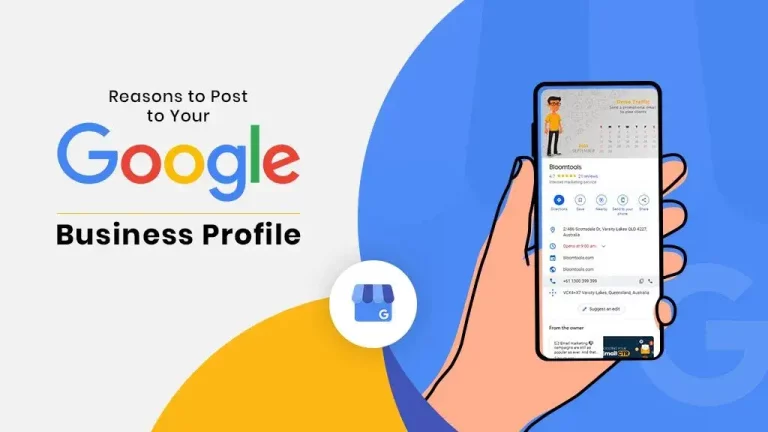Creating Compelling Content – How Storytelling Drives Engagement

In the digital age, where information is abundant and attention spans are fleeting, crafting compelling content is more crucial than ever. The key to capturing and retaining your audience’s attention lies in storytelling. Stories resonate on a deeper emotional level than mere facts or data, making them a powerful tool for engaging your audience and driving meaningful interactions. In this comprehensive guide, we’ll explore how storytelling can transform your content strategy and drive engagement, covering the principles of effective storytelling, techniques for crafting engaging narratives, and strategies for integrating storytelling into various content formats.
1. The Power of Storytelling in Content Creation
Storytelling has been an integral part of human communication for centuries. From ancient oral traditions to modern digital platforms, stories have served as a means of sharing experiences, conveying values, and connecting with others. In the realm of content creation, storytelling is a potent tool for engaging your audience, building brand identity, and driving action.
1.1 Why Storytelling Matters
- Emotional Connection: Stories evoke emotions, which help create a bond between your brand and your audience. Emotional engagement increases the likelihood of audience retention and encourages them to take action.
- Memorability: People remember stories better than they remember facts or figures. A compelling narrative is more likely to stick in your audience’s mind, making your message more memorable.
- Brand Identity: Storytelling helps convey your brand’s values, mission, and personality. It differentiates your brand from competitors and fosters a sense of connection with your audience.
- Engagement: Engaging stories capture attention and hold it longer than straightforward information. A well-told story encourages readers to explore more content, share it with others, and engage with your brand.
1.2 The Science Behind Storytelling
Research has shown that storytelling activates various parts of the brain, including those responsible for sensory experiences and emotions. According to a study by Paul Zak, a neuroscientist, storytelling triggers the release of oxytocin, a hormone associated with empathy and connection. This biological response explains why stories have such a profound impact on our perceptions and behaviours.
2. Principles of Effective Storytelling
To create compelling content that drives engagement, it’s essential to understand the core principles of storytelling. These principles form the foundation of any successful narrative and help ensure that your content resonates with your audience.
2.1 Know Your Audience
Understanding your audience is the first step in crafting a story that resonates. Conduct research to identify your target audience’s demographics, interests, and pain points. Create audience personas to represent different segments of your audience and tailor your stories to address their specific needs and preferences.
- Demographics: Age, gender, income, education level, and occupation.
- Interests: Hobbies, passions, and topics of interest.
- Pain Points: Challenges, problems, and desires related to your industry or product.
2.2 Define Your Message
Every story should have a clear message or theme that aligns with your content goals. Whether you’re aiming to educate, entertain, or inspire, define the core message you want to convey and ensure that it is consistent throughout your narrative.
- Purpose: Determine the purpose of your story, such as promoting a product, raising awareness, or building brand loyalty.
- Key Takeaways: Identify the key takeaways you want your audience to remember after engaging with your content.
2.3 Structure Your Story
A well-structured story has a clear beginning, middle, and end. This structure helps guide your audience through the narrative and keeps them engaged.
- Beginning: Introduce the main characters, setting, and conflict. Set the stage for the story and capture your audience’s attention.
- Middle: Develop the plot, build tension, and introduce key turning points. This is where the bulk of the narrative unfolds and where your audience becomes more invested.
- End: Resolve the conflict, provide closure, and reinforce the main message. Ensure that the conclusion leaves a lasting impression and aligns with your content goals.
2.4 Create Relatable Characters
Characters are the heart of any story. They drive the narrative and help your audience connect emotionally with the content. Create relatable characters that embody the values and experiences of your audience.
- Protagonist: The main character who faces challenges and undergoes transformation. This could be a customer, an employee, or even your brand itself.
- Supporting Characters: Secondary characters who contribute to the narrative and help advance the plot.
- Character Development: Show how characters evolve throughout the story, highlighting their growth and changes.
2.5 Use Vivid Descriptions
Vivid descriptions help bring your story to life and immerse your audience in the narrative. Use sensory details to create a rich and engaging experience.
- Visual Descriptions: Paint a picture of the setting, characters, and events. Describe colours, shapes, and environments.
- Auditory Descriptions: Include sounds and noises to enhance the atmosphere. Describe background noise, voices, or music.
- Emotional Descriptions: Convey the feelings and emotions of the characters. Use language that evokes empathy and connection.
3. Techniques for Crafting Engaging Narratives
Once you understand the principles of storytelling, it’s time to apply techniques that enhance the engagement and impact of your content. These techniques help make your stories more compelling and effective.
3.1 Start with a Hook
The opening of your story should grab attention and entice your audience to continue reading. Use a hook to draw readers in and set the stage for the rest of the narrative.
- Intriguing Question: Pose a question that piques curiosity and encourages readers to seek answers.
- Vivid Image: Present a striking image or scenario that captures the imagination.
- Provocative Statement: Make a bold or controversial statement that sparks interest.
3.2 Build Tension and Conflict
Conflict and tension are essential elements of a compelling story. They create suspense and keep readers engaged.
- Internal Conflict: Show the internal struggles of your characters, such as doubts, fears, or dilemmas.
- External Conflict: Present challenges or obstacles that characters must overcome, such as competition, adversity, or antagonists.
- Rising Action: Gradually build tension by introducing complications and increasing stakes.
3.3 Use Dialogue Effectively
Dialogue brings characters to life and adds authenticity to your story. Use dialogue to reveal personality, advance the plot, and create dynamic interactions.
- Natural Speech: Write dialogue that reflects natural speech patterns and language. Avoid overly formal or stilted dialogue.
- Character Voice: Ensure that each character has a distinct voice and speaking style that aligns with their personality.
- Subtext: Use dialogue to convey underlying emotions and intentions that may not be explicitly stated.
3.4 Incorporate Visual Elements
Visual elements enhance the storytelling experience and make your content more engaging. Use images, videos, and infographics to complement your narrative.
- Images: Include relevant and high-quality images that illustrate key moments or themes in your story.
- Videos: Create video content that brings your story to life through motion, sound, and visuals.
- Infographics: Use infographics to present data or information in a visually appealing and easy-to-understand format.
3.5 Employ a Conversational Tone
A conversational tone helps create a connection with your audience and makes your content more relatable. Write in a way that feels personal and engaging.
- Use Personal Pronouns: Address your audience directly using pronouns like “you” and “your” to create a sense of intimacy.
- Simple Language: Avoid jargon and complex language. Use clear and straightforward language that is easy to understand.
- Engage with the Audience: Ask questions, encourage interaction, and invite feedback to foster a two-way conversation.
4. Integrating Storytelling into Various Content Formats
Storytelling can be applied to a wide range of content formats, each offering unique opportunities for engagement. Here’s how to integrate storytelling into different types of content.
4.1 Blog Posts
Blog posts are a versatile format for storytelling. Use them to share in-depth narratives, case studies, or personal experiences.
- Personal Stories: Share personal anecdotes or experiences that resonate with your audience and provide valuable insights.
- Case Studies: Present real-life examples of how your product or service has solved problems or delivered results for customers.
- Series: Create a series of blog posts that follow a storyline or theme, encouraging readers to return for the next instalment.
4.2 Social Media
Social media platforms offer a dynamic environment for storytelling, allowing you to reach and engage with your audience in real time.
- Stories: Use social media stories (e.g., Instagram Stories, Facebook Stories) to share short-lived, engaging narratives that disappear after 24 hours.
- Posts: Craft compelling social media posts that include visuals and concise storytelling elements. Share behind-the-scenes content, customer testimonials, or brand milestones.
- Live Streams: Host live streaming events to connect with your audience in real time and share live stories or updates.
4.3 Videos
Videos are a powerful medium for storytelling, offering a combination of visuals, sound, and motion.
- Explainer Videos: Create videos that explain your product or service through a narrative format, highlighting key features and benefits.
- Brand Stories: Share the story of your brand’s origins, values, and mission to build a deeper connection with your audience.
- Customer Testimonials: Feature customer stories and testimonials in video format to showcase real-life experiences and successes.
4.4 Email Campaigns
Email campaigns provide an opportunity to engage with your audience through personalised and targeted storytelling.
- Welcome Emails: Craft a welcome series that introduces new subscribers to your brand and shares your story and values.
- Newsletters: Include storytelling elements in your newsletters, such as updates on company achievements, customer success stories, or behind-the-scenes content.
- Drip Campaigns: Use automated email sequences to share a series of related stories or messages that guide recipients through a specific journey.
4.5 Infographics
Infographics combine visuals and information to present complex data or concepts in an engaging and easy-to-understand format.
- Narrative Flow: Use infographics to tell a visual story by presenting information in a logical sequence with a clear beginning, middle, and end.
- Data Visualisation: Incorporate charts, graphs, and visual elements to illustrate key points and enhance the narrative.
5. Measuring the Impact of Storytelling
To ensure that your storytelling efforts are driving engagement and delivering results, it’s important to measure the impact of your content. Use the following metrics to evaluate the effectiveness of your storytelling.
5.1 Engagement Metrics
- Page Views: Track the number of page views to gauge interest and reach.
- Time on Page: Measure the average time users spend on your content to assess engagement and content quality.
- Social Shares: Monitor the number of social media shares to evaluate how well your content resonates with your audience.
5.2 Conversion Metrics
- Click-Through Rate (CTR): Measure the percentage of users who click on links or calls-to-action (CTAs) within your content.
- Lead Generation: Track the number of leads generated from your content, such as sign-ups or inquiries.
- Sales: Monitor the impact of your content on sales and revenue, especially for direct response campaigns.
5.3 Feedback and Sentiment
- Comments and Reviews: Analyse user comments and reviews to gauge sentiment and gather feedback on your content.
- Surveys and Polls: Conduct surveys or polls to gather insights on how your audience perceives your storytelling and content.
6. Conclusion
Creating compelling content through storytelling is a powerful way to engage your audience, build brand identity, and drive meaningful interactions. By understanding the principles of effective storytelling, employing techniques to craft engaging narratives, and integrating storytelling into various content formats, you can transform your content strategy and achieve impressive results.
Storytelling is not just about telling a story; it’s about creating a connection, evoking emotions, and leaving a lasting impression. By applying the strategies outlined in this guide, you can harness the power of storytelling to captivate your audience, enhance your content, and drive engagement. Remember, the essence of storytelling lies in its ability to resonate with your audience and create a memorable experience, making it an invaluable tool for content creators and marketers alike.
Contact Us
You can contact us on Whatsapp:
or fill up the contact form





